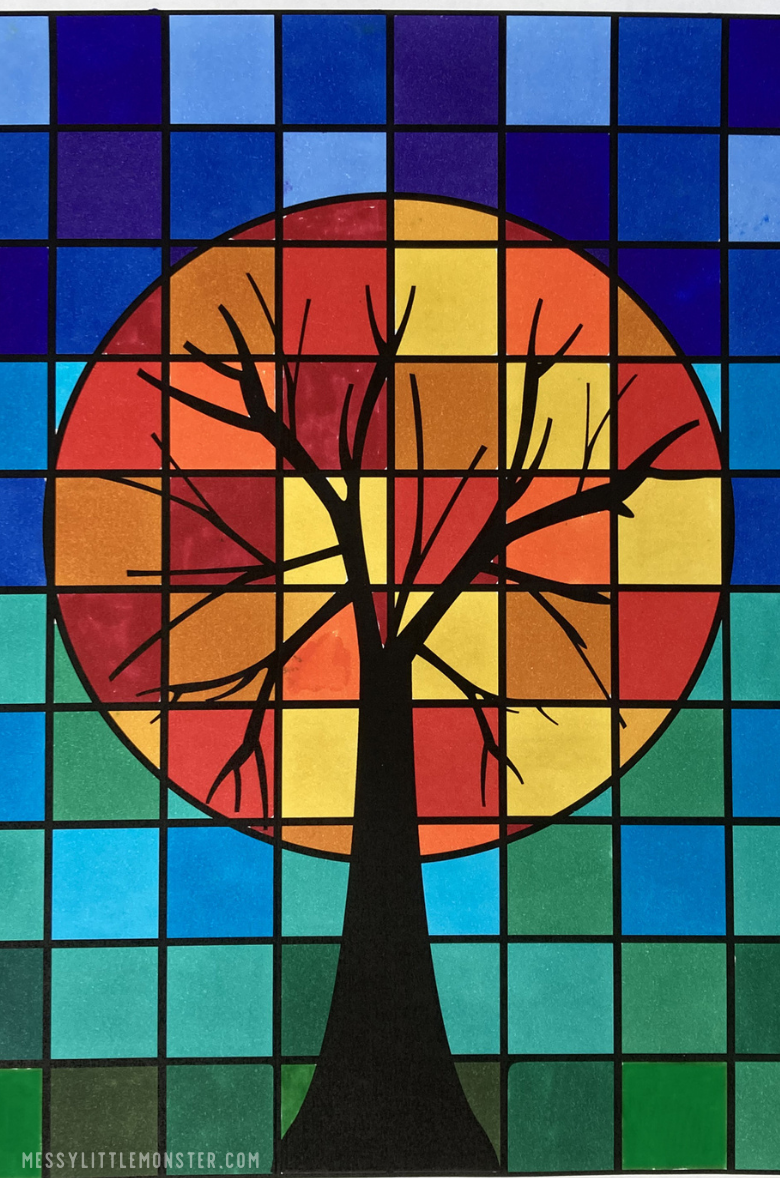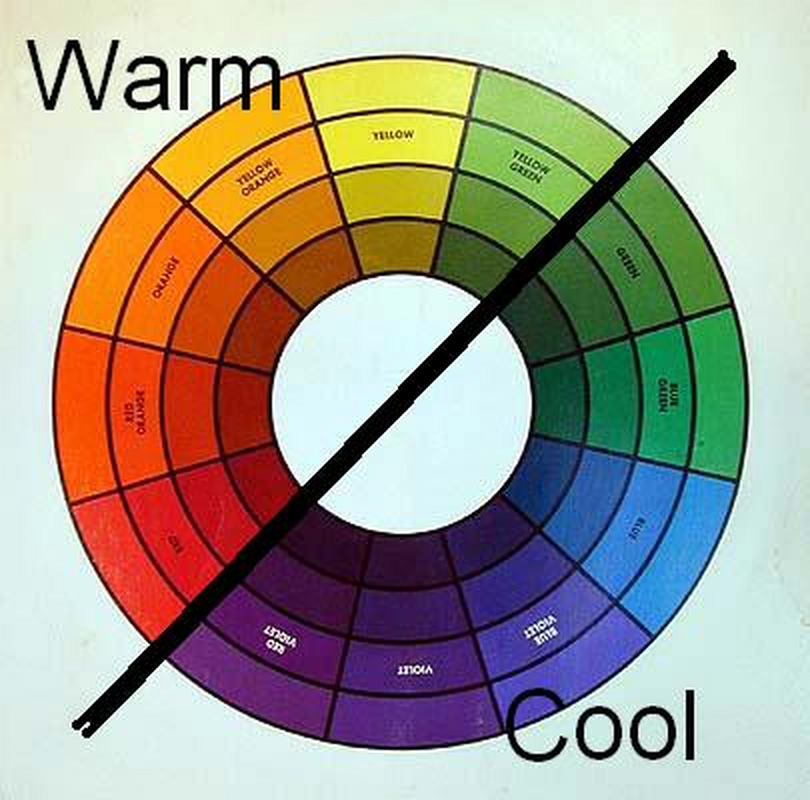Imagine standing before a painting: a fiery sunset bleeding into a cool, azure sky. The warmth of the sun seems to radiate outward, while the blue recedes into a calming depth. This captivating interplay of warmth and coolness isn't accidental—it's the silent language of color, whispering emotions and narratives through art.
Since the dawn of human creativity, artists have harnessed the power of warm and cool colors. From the ochre pigments used in prehistoric cave paintings to the vibrant hues of Renaissance masterpieces, this fundamental principle has shaped the way we perceive and experience art. It transcends cultural boundaries and artistic movements, serving as a timeless tool for evoking mood, depth, and meaning.
The concept of warm and cool colors is rooted in our perception of light and temperature. We instinctively associate warm colors like reds, oranges, and yellows with sunlight, fire, and heat. They tend to advance visually, seeming closer to the viewer. Conversely, cool colors like blues, greens, and violets remind us of water, sky, and shadows. They recede in space, creating a sense of distance and tranquility.
This inherent duality is what makes warm and cool colors so powerful in art. Artists strategically employ them to evoke a wide range of emotions and effects. A landscape bathed in warm light feels inviting and vibrant, while one dominated by cool tones might appear serene or even melancholic. In portraiture, warm colors can highlight a subject's vitality, while cool colors might emphasize their contemplative nature.
Beyond emotional impact, warm and cool colors play a crucial role in composition and depth. By juxtaposing warm and cool hues, artists create contrast, guide the viewer's eye, and add a sense of three-dimensionality to a two-dimensional surface. A splash of warm color against a predominantly cool background immediately draws attention, while a subtle transition from cool to warm can create the illusion of receding space.
Advantages and Disadvantages of Using Warm and Cool Colors in Artwork
While the strategic use of warm and cool colors offers numerous advantages, understanding their potential drawbacks is equally crucial. Here’s a closer look:
| Advantages | Disadvantages |
|---|---|
|
|
Best Practices for Implementing Warm and Cool Colors in Your Artwork
Ready to explore the captivating interplay of warm and cool colors in your own artistic journey? Consider these best practices:
1. Start with a Limited Palette: Begin with a simplified palette of a few key warm and cool colors. This helps you understand their interactions before introducing more complexity.
2. Consider the Emotional Impact: Be mindful of the emotions you want to convey. Warm colors are excellent for energy and passion, while cool tones evoke calmness and reflection.
3. Experiment with Contrast: Use contrasting warm and cool colors to create focal points, add drama, and define forms within your artwork.
4. Play with Temperature Shifts: Subtle transitions between warm and cool tones can add depth and atmosphere to your piece, guiding the viewer's eye.
5. Seek Inspiration from Masters: Study how renowned artists have used warm and cool colors throughout history. Observe their techniques, color choices, and the emotions they evoke.
Common Questions About Warm and Cool Colors in Artwork
1. What are some examples of warm colors in art? Warm colors include shades of red, orange, yellow, and earth tones like brown and ochre.
2. What are some examples of cool colors in art? Cool colors encompass hues of blue, green, violet, and often grays with blue undertones.
3. Can a color be both warm and cool? Yes, some colors can lean towards warm or cool depending on their undertones. For instance, a red with a blue undertone can appear cooler than a red with an orange undertone.
4. How can I use warm and cool colors to create depth in my painting? Placing warmer colors in the foreground and cooler colors in the background creates an illusion of depth and atmospheric perspective.
5. Can I use only warm or cool colors in a single artwork? Yes, you can create monochromatic or analogous color schemes using primarily warm or cool tones. However, even in these cases, a touch of the opposite temperature can add a subtle yet effective contrast.
6. What is color temperature in art? Color temperature refers to the perceived warmth or coolness of a color and its psychological effects on the viewer.
7. How can I practice using warm and cool colors? Experiment with still life arrangements, landscapes, or even abstract compositions, focusing on the interplay of warm and cool hues.
8. Are there any online resources for learning more about warm and cool colors? Yes, websites like Color Matters and Adobe Color offer valuable insights and tools for understanding color theory.
Tips and Tricks for Working with Warm and Cool Colors
- Use a limited color palette when starting to avoid muddy colors.
- Practice creating a color wheel using only warm and cool primaries to see the relationships between them.
- Squint your eyes slightly when looking at your artwork. This helps to see the values (lightness and darkness) of your colors more clearly and how they interact.
- Don't be afraid to experiment! The beauty of art lies in its subjective nature.
The dance between warm and cool colors in artwork is a timeless dialogue that transcends time and cultures. By understanding the principles of color temperature and applying them thoughtfully, you can breathe life into your creations, evoke a spectrum of emotions, and add a captivating depth that draws the viewer into the heart of your artistic vision. So, embrace the language of color, experiment fearlessly, and watch as your artwork resonates with newfound vibrancy and meaning.
What time is sunrise today your guide to greeting the day
Level up your fun exploring oregons next gen arcades
Understanding the influence of elite eme members
Warm And Cool Colours Activity - Khao Tick On
Warm And Cool Colors Drawing - Khao Tick On
Color Wheel For Painting With Acrylics at Joshua Krause blog - Khao Tick On
Warm/cool chromatic work #artideas - Khao Tick On
Oil Pastel Colorful Unique Beautiful Drawings - Khao Tick On
Warm and Cool Color Trees - Khao Tick On
Warm To Cool Color Chart - Khao Tick On
Tree in Warm & Cool colors - Khao Tick On
warm and cool colour artwork - Khao Tick On
Warm And Cool Colors Drawing - Khao Tick On
Grade 1 Art, First Grade Art, Grade 2, Elementary Art Rooms, Elementary - Khao Tick On
Pesci a colori caldi e freddi - Khao Tick On
Cool Wall Art Collage at Jeffery Olsen blog - Khao Tick On
Artists For Kids: Second Grade - Khao Tick On
Fishes in warm and cool colors - Khao Tick On














